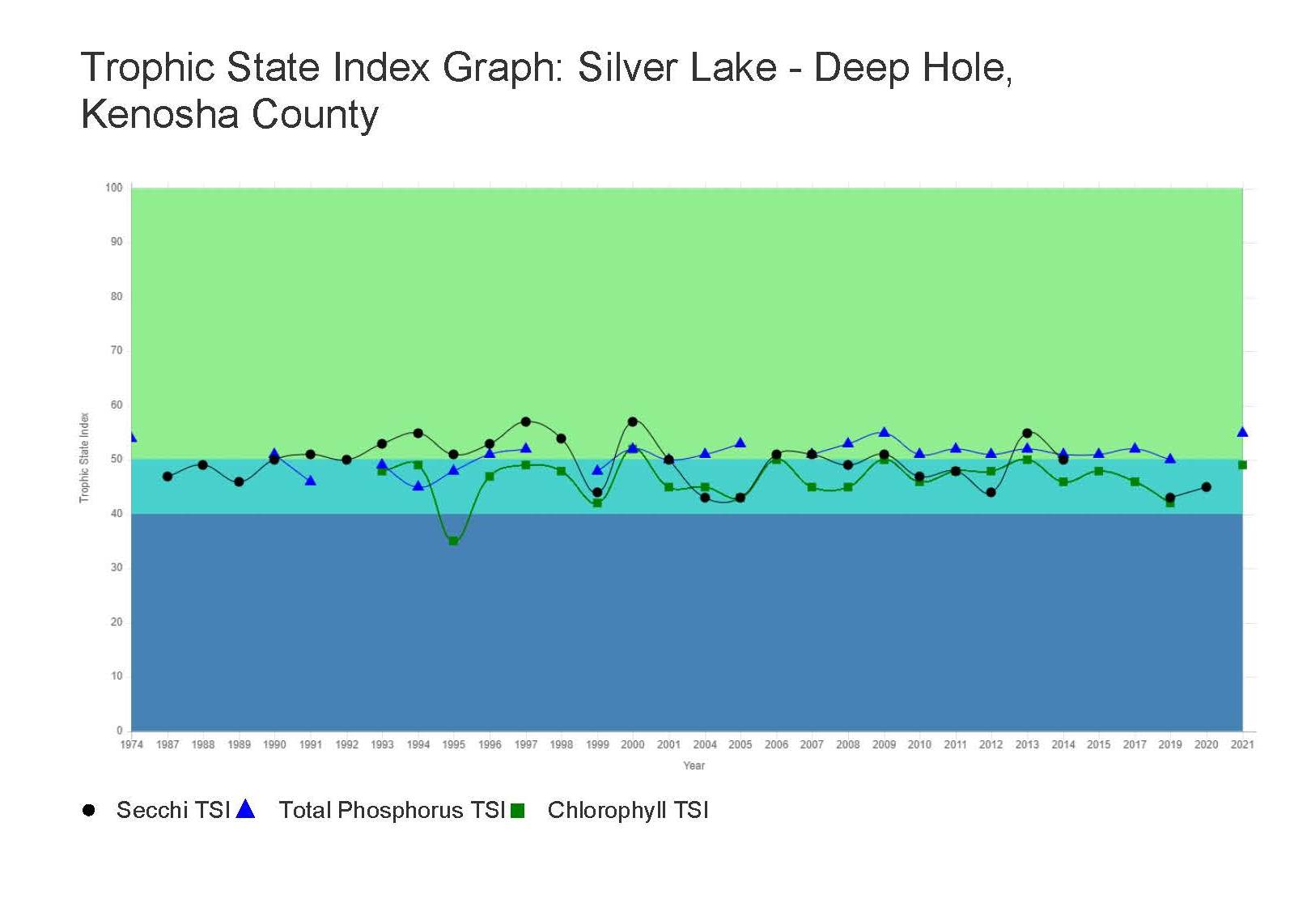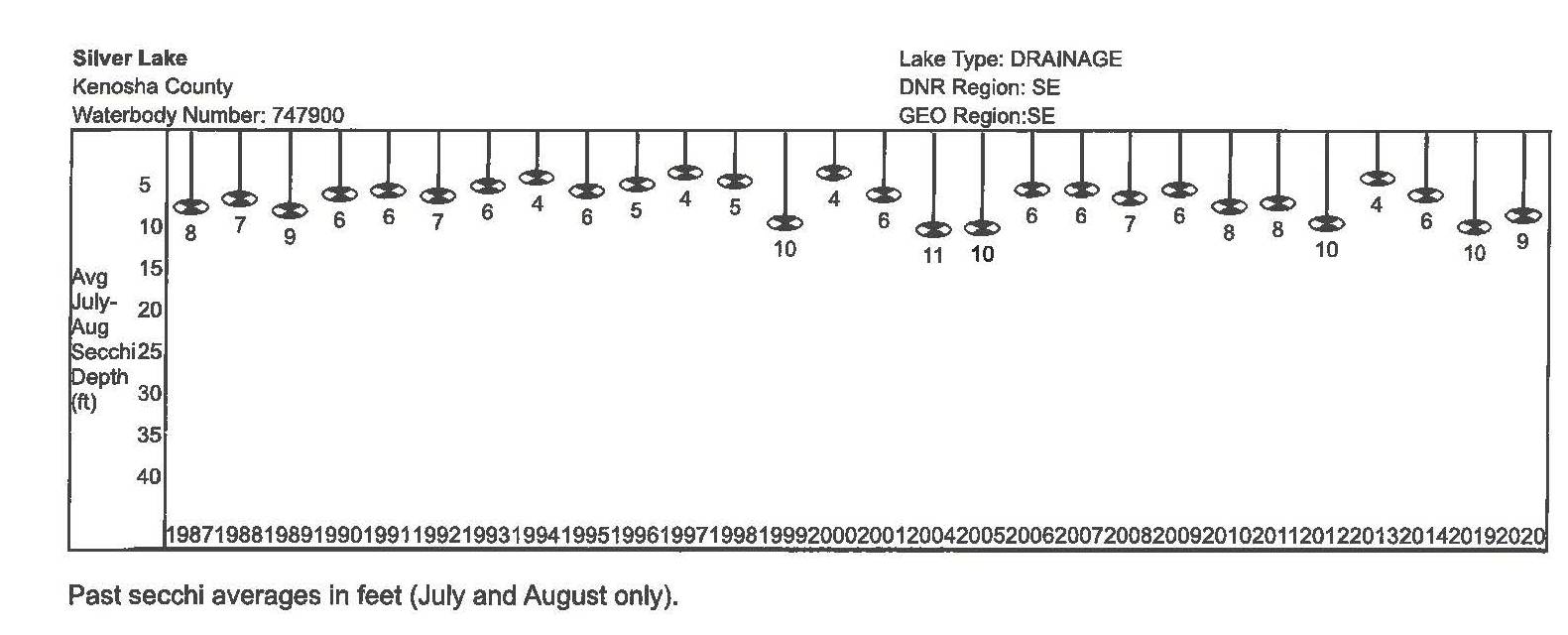Water Quality Overview
Silver Lake’s overall water quality is quite good.

Water quality data on Chlorophyll-A, Phosphorus, and Water Clarity has been collected by volunteers from 1987 to the present:
- The lake’s Chlorophyll-A levels are slightly lower than average. Chlorophyll-A is an indicator of algae production.
- The total Phosphorus is slightly higher than average. Aquatic plants capture much of the Phosphorus, which limits algae growth and increases water clarity.
- The lake’s Water Clarity levels are also slightly lower than expected given the Chlorophyll-A levels. One possible reason is the amount of high-speed boat traffic that stirs up sediment in shallower areas of the lake, decreasing Water Clarity.
Based on the measures of Chlorophyll-A, Phosphorus, and Water Clarity, Silver Lake has an annual Trophic State Index (TSI) in the high 40’s. As a result, Silver Lake is categorized as a Mesotrophic lake, indicating it has moderate amounts of nutrients, as well as healthy, diverse populations of aquatic plants, algae, and fish.
Wisconsin lakes are determined to be Oligotrophic, Mesotrophic or Eutrophic based on their TSI scores.
- Oligotrophic lakes are those with a TSI below 40.
- These lakes are generally clear, deep, and cold, and have low nutrient and high oxygen levels.
- These lakes support cold water fish species, often in lower abundance but in larger sizes.
- Many northern Wisconsin lakes are oligotrophic.
- Eutrophic lakes are at the opposite end of the spectrum, having a TSI beginning at 50.
- These lakes are high in nutrients and contain large populations of aquatic plants, algae, and fish such as carp and bullhead that are generally more tolerant of warm temperatures and lower oxygen conditions.
- Aquatic plants and algae often grow to nuisance levels.
- Some shallow lakes and ponds in southern Wisconsin are eutrophic.
- Mesotrophic lakes are those between the above two classifications, having TSI’s of 40-50. Mesotrophic lakes have more diverse fish species and only occasional algae blooms.
Water quality data for Wisconsin lakes is collected by a Citizen Lake Monitoring Network (CLMN) of over 1,000 volunteers who are trained to measure water clarity and collect water samples which are then analyzed by the state laboratory. The WDNR also uses remote satellite imaging to determine the water clarity of Wisconsin lakes.
Silver Lakes CLMN volunteers have provided water quality data going as far back as 1973. Beginning in 1987, Jerry Adams, Stormy Grumbeck, the Mayer family, and then Bill Erb have been the CLMN volunteers for Silver Lake.
Below are the Silver Lake Secchi measurements over time.

For More Information
Specific Silver Lake TSI data, as well as additional CLMN, water quality, and satellite imaging information can be found at the following websites and videos.
https://dnr.wi.gov/lakes/waterquality/Station.aspx?id=303123
https://www3.uwsp.edu/cnr-ap/UWEXLakes/Pages/programs/clmn/default.aspx#types
http://www.lakesat.org/maptext1.php
Water Clarity Monitoring - YouTube
Water Chemistry Monitoring - Wisconsin Citizen Lake Monitoring Network - YouTube
Resources

